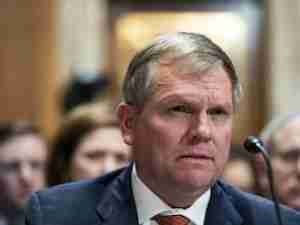A replacement for the century-old New Jersey bridge that is key to northeastern U.S. train travel took a major step forward, while a Hudson River rail tunnel remained a lower priority among new project rankings by the Trump administration.
Planners of the projects, part of the proposed Gateway rail-improvement program for the congested New York City area, say they’re crucial to the U.S. economy. They’ve been stalled by President Donald Trump, who insists that the states, and not federal taxpayers, should bear most of the costs.
In Federal Transit Administration rankings, the Portal Bridge over the Hackensack River in New Jersey moved up to a medium-high priority from medium-low. This allows the span’s construction, with an estimated cost of at least $1.5 billion, to head to the engineering phase and “puts it on track to receive federal funding,” said U.S. Senator Bob Menendez, a Democrat from New Jersey and ranking member of the Senate transit subcommittee.
“This is the most significant step forward for the Gateway Program since this administration took office,” Menendez said in a statement.
A replacement of the decaying 109-year-old Hudson River tunnel, the sole rail link to Manhattan from New Jersey, maintained its medium-low rating. The Gateway plan calls for building a second link and rehabilitating the existing tunnel to ease the New York City commute and speed trains between Boston and Washington, D.C.
“The Department of Transportation continues to ignore the most urgent infrastructure project in the nation,” Steven M. Cohen, chairman of the Gateway Program Development Corporation, said in a statement.
The tunnel is safe, though increasingly unreliable, according to Amtrak, its owner. On Feb. 3 an electrical malfunction, just outside the tunnel at Pennsylvania Station in Manhattan, caused hours of rush-hour delays and left one train stranded. Hundreds of thousands of travelers were affected.
To increase the tunnel’s prospects for federal funding, tunnel planners reduced the $12.7 billion estimated price tag by $1.4 billion and cut the U.S. government’s cost share by 5 percentage points, to 44%.
“We will continue to do everything in our power to move this project forward, because it is the responsible thing to do for passengers and for the nation’s economic future,” Cohen said.







